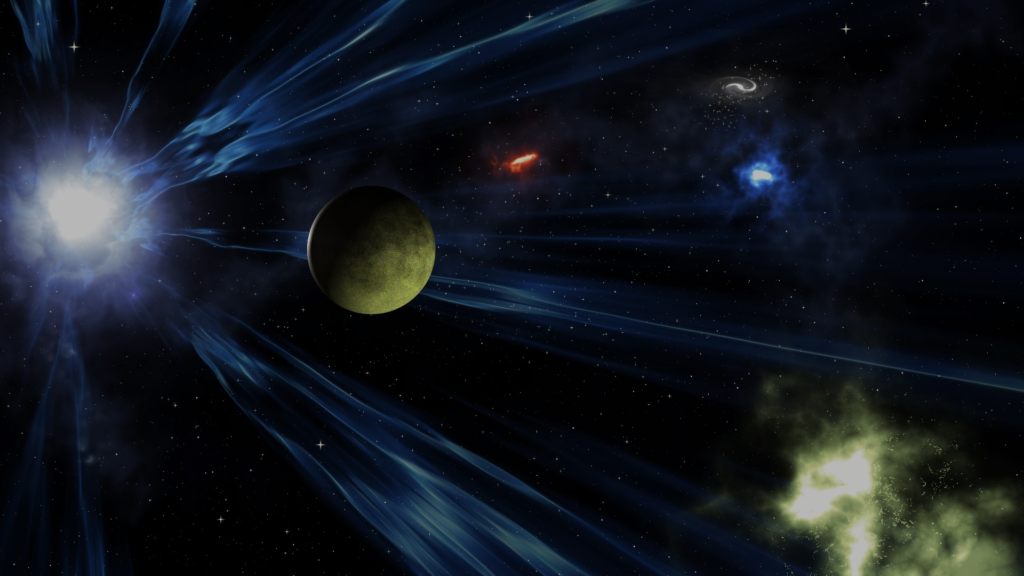## A Journey Through the Milky Way Galaxy: Its Structure and Wonders
Have you ever looked up at the night sky and felt a sense of awe, wondering about the vastness of space? We all inhabit a tiny speck of dust within a breathtakingly beautiful cosmic structure: the Milky Way galaxy. Forget everything you think you know about city lights; prepare for a journey into a swirling galaxy of stars, gas, dust, and mysteries waiting to be unveiled!
### 1. The Milky Way: More Than Meets the Eye
When we look up on a clear night, the faint band of light stretching across the sky is the edge-on view of our own galaxy. Imagine a giant, cosmic pinwheel, hundreds of thousands of light-years across! Our Milky Way is a spiral galaxy, meaning it has a central bulge of stars surrounded by spiral arms that gracefully wind outwards. These arms aren’t rigid structures but rather regions of higher density where stars are more concentrated. Think of them as traffic jams on a cosmic highway! These arms are punctuated by bright nebulae – vast clouds of gas and dust where new stars are born.
The Milky Way contains hundreds of billions of stars, including our own Sun, which resides about two-thirds of the way out from the center in a relatively quiet spiral arm. That’s a lot of cosmic neighbors! And that’s just the stars we can *see*. The galaxy also holds a significant amount of dark matter, a mysterious substance that we can’t directly observe but whose gravitational effects we can detect. We’ll explore dark matter further in a later section.
### 2. The Galactic Center: A Region of Extreme Activity
At the heart of the Milky Way lies a supermassive black hole, Sagittarius A*, millions of times the mass of our Sun. This behemoth exerts a powerful gravitational influence, shaping the orbits of stars in the galactic center. These stars whiz around Sagittarius A* at incredibly high speeds, providing strong evidence for the black hole’s existence. Observing the movement of these stars has allowed astronomers to estimate the black hole’s mass with remarkable precision.
The galactic center is also a region of intense star formation. The high density of gas and dust, combined with the gravitational pull of the black hole, creates a dynamic environment where stars are born at an accelerated rate. This results in a brilliant, chaotic region full of young, hot stars and glowing nebulae.
### 3. Exploring the Spiral Arms: Star Nurseries and Stellar Graveyards
The spiral arms of the Milky Way are not just visually stunning, they are also dynamic regions of stellar evolution. As mentioned earlier, these arms are sites of intense star formation. Massive clouds of gas and dust collapse under their own gravity, triggering the birth of stars. These newborn stars illuminate the surrounding nebulae, creating breathtaking celestial landscapes visible through telescopes. Examples include the Orion Nebula, a stellar nursery readily visible with even small telescopes, and the Eagle Nebula, famous for its “Pillars of Creation” – towering structures of gas and dust where new stars are constantly forming.
As stars age and die, they also play a significant role in shaping the spiral arms. Massive stars end their lives in spectacular supernova explosions, scattering heavy elements into space. These elements become the building blocks for new generations of stars and planets. In contrast, smaller stars like our Sun gently shed their outer layers, forming planetary nebulae. These nebulae are beautiful, albeit less dramatic, remnants of a star’s final stages of life.
### 4. Dark Matter: The Milky Way’s Invisible Scaffolding
We can’t see dark matter directly, but its gravitational influence is undeniable. Observations show that galaxies rotate much faster than they should based solely on the visible matter they contain. This discrepancy suggests the presence of a significant amount of unseen mass – dark matter – holding the galaxy together. It acts like an invisible scaffolding, providing the gravitational “glue” that prevents the Milky Way from flying apart. The nature of dark matter remains one of the biggest unsolved mysteries in astronomy. Scientists are actively searching for clues to its composition and properties, hoping to uncover its secrets.
### Conclusion: Our Place in the Cosmos
The Milky Way galaxy is a vast and complex structure, a testament to the grandeur of the universe. From the supermassive black hole at its center to the vibrant spiral arms teeming with stars, our galaxy is a place of constant change and breathtaking beauty. Understanding its structure and evolution helps us appreciate our place within this cosmic tapestry.
Want to learn more? Try searching for images of the Milky Way taken by powerful telescopes like Hubble or the James Webb Space Telescope. And don’t forget to share your thoughts and any questions in the comments below! Let’s continue this cosmic conversation!


